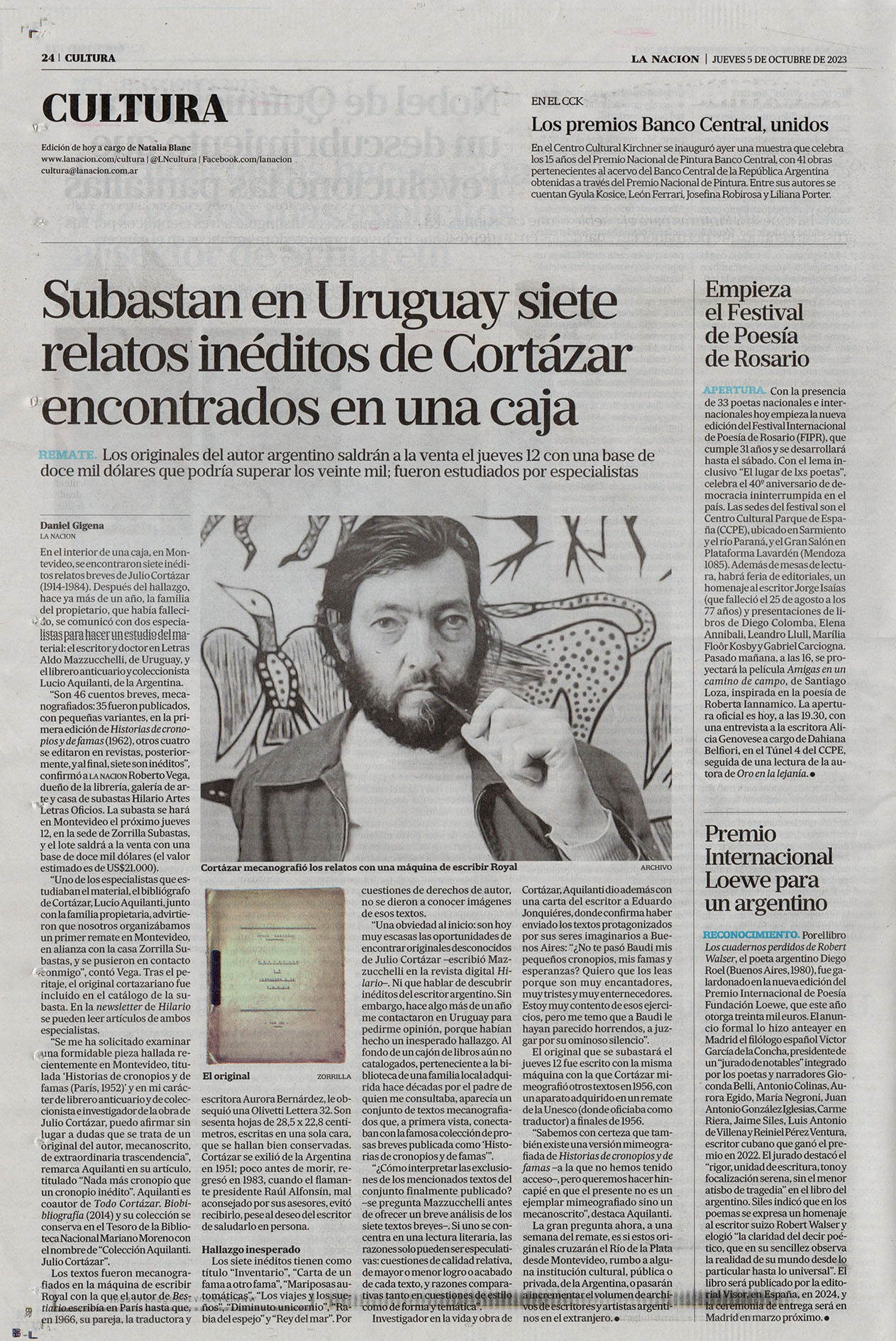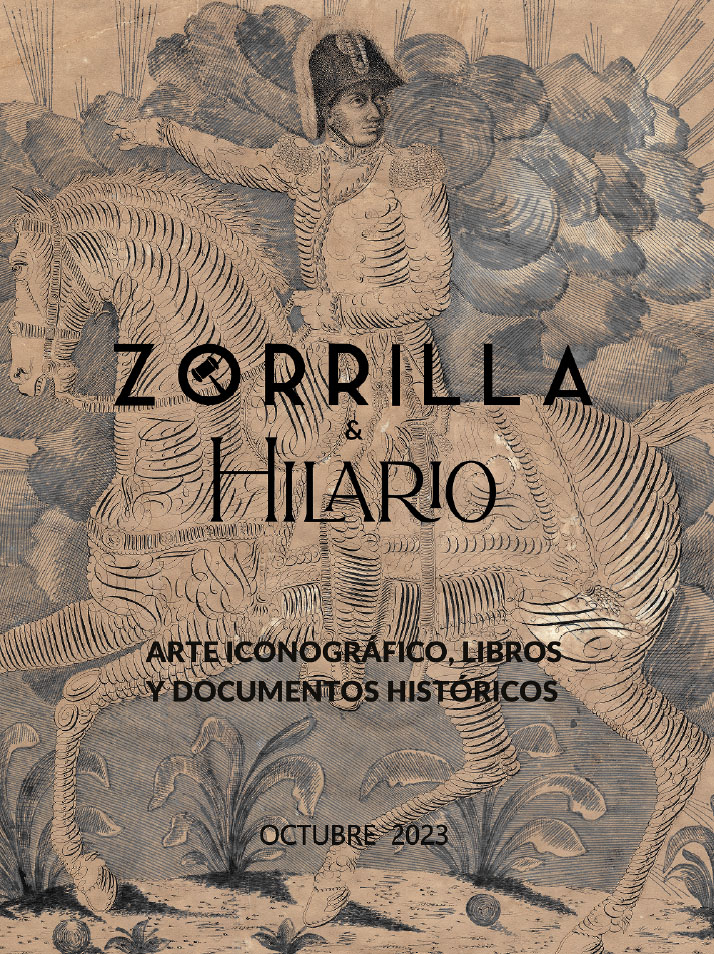Our followers know it. The news spread around the world with a surprising saga of journalistic articles in news agencies and in the most prestigious media: on October 12, together with Zorrilla Subastas, we held the first auction in Montevideo and put up for sale an original typescript by Julio Cortázar with forty and six short stories from his work “History of cronopios and fames.” A private collector was the recipient of this wonderful find; It included seven unpublished ones and aroused the interest of seven bidders.
Since this story, we express it, was already widely commented on by the press -before and after the sale-, now we want to dwell on another aspect of that first Auction of Iconographic Art, Books and Historical Documents. In particular, we intend to bring to light the behavior of both national states of the River Plate. The Argentine authorities of the Ministry of Culture of the Nation, interested in the Cortazar treasure, searched hard for a way to participate in the auction and after exploring avenues with their Uruguayan counterparts, they decided to do it directly, by telephone. From the organization of the auction I was responsible for paving the way for this to be possible and from the interested parties, we found every predisposition to meet the minimum requirements. And there they were on the phone seeking to increase Argentine public heritage with such a beautiful literary piece. But the price exceeded their possibilities and it could not be. The prompt decision, the gesture, deserves recognition, they tried and in the midst of a very complex situation for the Argentine economy. Everything is very commendable.
On the other side of the River Plate, the Ministry of Education and Culture of Uruguay advanced with its usual modality and, through a representative, in the room exercised the right of acquisition for the State in five lots; a lithograph by Adolphe D´Hastrel -Puerto de Carmelo sobre el arroyo De las Vacas-; a 25-page pamphlet with the “Esposición (sic) del General D. Juan A. Lavalleja [...]” of 1833, printed in Buenos Aires; and three historical manuscripts, a receipt signed by the painter Gaetano Gallino, a set of documents collected in homage to Juan Manuel Blanes and a campaign diary that testified to the War against the Brazilian Empire, including the battle of Ituzaingó.
The future of this last batch allows us to understand the conduct of the Eastern Republic of Uruguay towards the cultural heritage in the hands of individuals. When we found the manuscript in a private collection in Montevideo, months ago, we contacted one of the highest local museological authorities who told us to communicate the good news to the doctor in History Ana Frega, an eminence. We sent her the complete transcription of the document and received all her comments on the manuscript, incorporating a part of them into the published cataloguing. Later, already exhibited, representatives from the Education and Culture area visited us, and of course, we inferred that different meetings were held in their area to define which works were of interest to increase public heritage. In this process, the local auction house was previously notified of the decision to participate in the auction - without warning about the items of interest - and an official from the National Cultural Heritage Commission appeared in the room at the time of the auction. auction. Once the bid was made for each of those lots and the eventual winner and the amount reached were indicated, this public agent exercised the right of acquisition out loud and the purchase ticket passed into the hands of the State. This also happened with the Diario de Campaña of 1826/1827. Days later we thanked Dr. Ana Frega, communicating this acquisition; Her response is part of that virtuous path: "I am glad that everything turned out well and, also, that part of what was auctioned went to Uruguayan public repositories."
As you can imagine, we are already working for the next appointment in Uruguay; More than 75% of the catalog has achieved a new destination and right now we are moving forward with a new selection of works. From Hilario we want to thank the Uruguayan people and authorities who have received us so well. Thank you!

